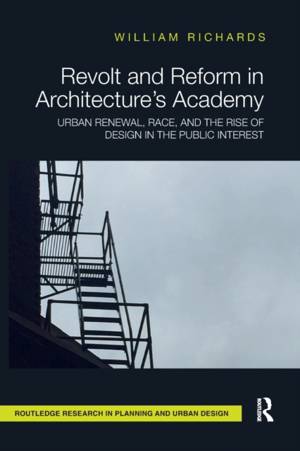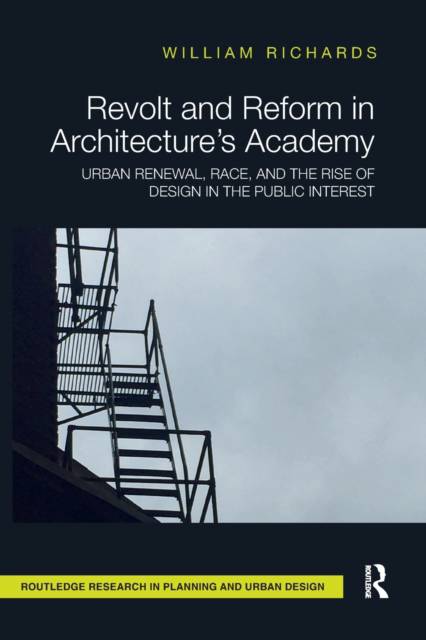
- Retrait gratuit dans votre magasin Club
- 7.000.000 titres dans notre catalogue
- Payer en toute sécurité
- Toujours un magasin près de chez vous
- Retrait gratuit dans votre magasin Club
- 7.000.0000 titres dans notre catalogue
- Payer en toute sécurité
- Toujours un magasin près de chez vous
Revolt and Reform in Architecture's Academy
Urban Renewal, Race, and the Rise of Design in the Public Interest
William RichardsDescription
Revolt and Reform in Architecture's Academy uniquely addresses the complicated relationship between architectural education and urban renewal in the 1960s, which paved the way for what is today known as public interest design. Through an examination of curricular reforms at Columbia University's and Yale University's schools of architecture in the 1960s, this book translates the "urban crisis" through the experiences of two influential groups of architecture students, as well as their contributions to design's lexicon.
The book argues that urban renewal and campus expansion half a century ago recast architectural education at two schools whose host cities, New York and New Haven, were critical sites for political, social, and urban upheaval in America. The urban challenges of that time are the same challenges rapidly growing cities face today--access, equity, housing, and services.
As architects, architects in training, and architecture students continue to wrestle with questions surrounding how design may serve a broadly defined public interest, this book is a timely assessment of the forces that have shaped the debate.
Spécifications
Parties prenantes
- Auteur(s) :
- Editeur:
Contenu
- Nombre de pages :
- 138
- Langue:
- Anglais
- Collection :
Caractéristiques
- EAN:
- 9781138595149
- Date de parution :
- 28-06-18
- Format:
- Livre broché
- Format numérique:
- Trade paperback (VS)
- Dimensions :
- 156 mm x 234 mm
- Poids :
- 217 g

Les avis
Nous publions uniquement les avis qui respectent les conditions requises. Consultez nos conditions pour les avis.






